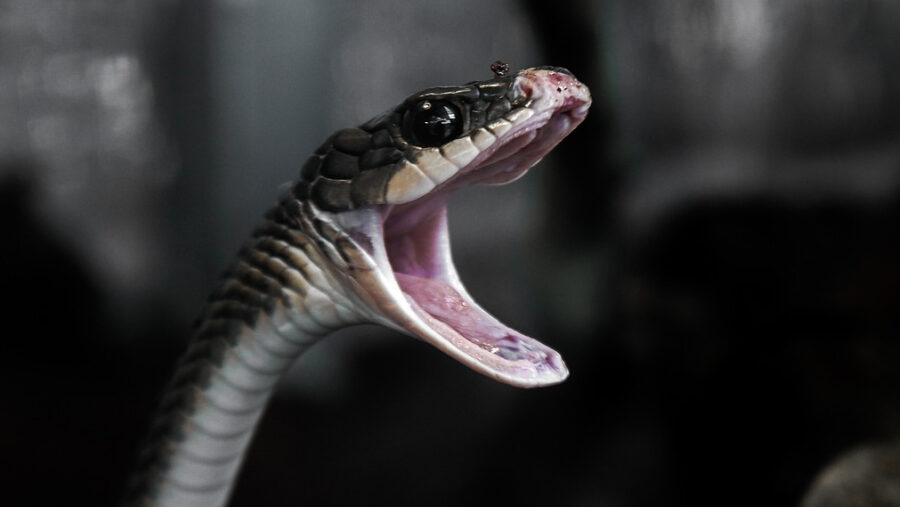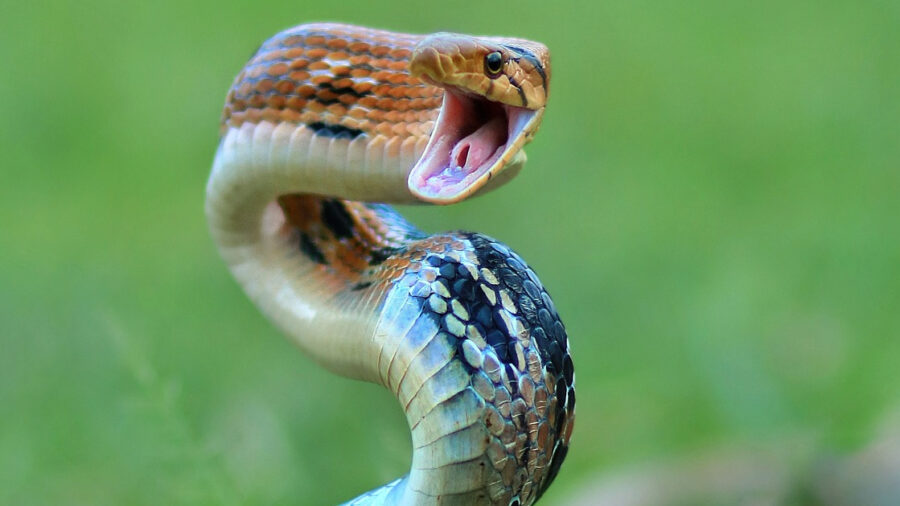Venomous Snakes Are Biting Even More People For Terrifying Reason

With floods tearing apart sections of Vermont and the Canadian wildfires continuing to send plumes of smoke into the U.S., it seems that those of us living in the continental United States can’t catch a break. And, while Florida may be the capital of terrifying reptiles, a new report via ScienceAlert is warning folks around the country that venomous snake bites are on the rise thanks to rising temperatures.
As of right now, the World Health Organization reports that there are more than 5 million snake bites each year with a rate of 138,000 deaths.
For anyone who’s lived in a warmer climate, or essentially anywhere with sunshine, you’ll know that snakes love to bathe themselves in the rays, soaking up plenty of Vitamin D, and, with the world hitting record-high temperatures, snakes are more likely to slither out and cross your path.
While the weather certainly plays a part in the increase of snake bite incidents, which is on average six percent, the researchers behind the study think that there’s more to it. One of those environmental scientists, Noah Scovronick of Emory University in Georgia, says that humans could also be to blame for snakes acting more aggressively.
This checks out as social media has shown us the bad decisions made by those traveling to National Parks or even their local forests when they come in contact with wildlife.
Since snakes are more likely to come out of hiding in high temperatures, the chances of getting bit by a snake is increasing.
Helping the scientists reach their numbers of snake bite occurrences, they looked at almost 4,000 hospital visits between 2014 and 2020 that saw folks seeking medical attention after being bitten by a venomous snake. Taking what they learned and looking into weather patterns from the days that the patients were admitted, the researchers quickly learned that while summer is the peak season for snakes to be slithering and on the prowl, the season with the closest connection to the weather was spring.
This makes sense as, after their winter hibernation, the reptiles are packed with energy and a zest for the sun during the early days of spring.

Human behavior could also be to blame for snakes acting more aggressively.
One thing that the research was unable to land on was how the ever-rising temperatures could lead to more snake bites in the future. As we continue to build homes, workplaces, parks, and the like, in areas where snakes and other wildlife call home, the higher the chances are that we’ll see numbers for venomous attacks rise over the next few years.
As of right now, the World Health Organization reports that there are more than 5 million snake bites each year with a rate of 138,000 deaths.
Over the last year, we’ve seen some unbelievable stories coming out about snakes, particularly from the wild state of Florida where giant pythons have seemingly been taking over the Everglades National Park and the areas beyond. Folks have been seeing the slithery critters appear in their backyards and dodging snake bites with Animal Control working overtime to capture these behemoths.
At the end of the day, the best way to avoid finding yourself in a snake bite situation is to be cautious and aware of your surroundings. Summer means time to enjoy the outdoors, whether that be through hiking or another activity, many of which may put you directly in the line of attack. Just be sure to keep an eye out and you’ll make it out just fine.












